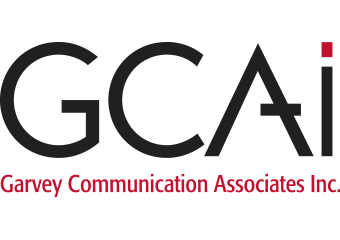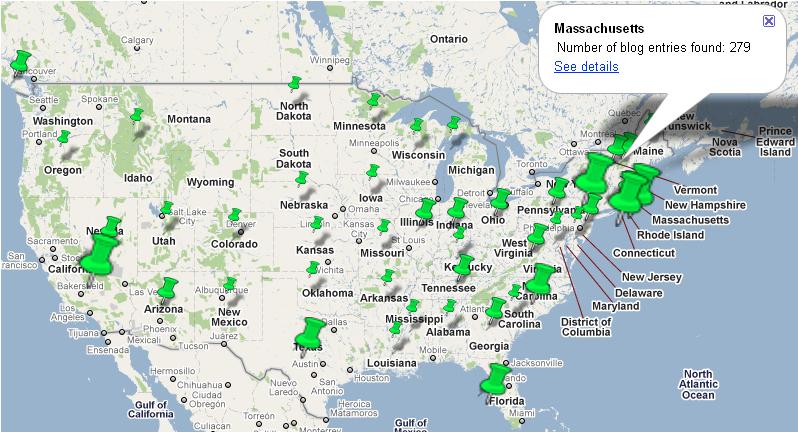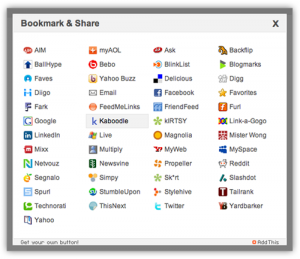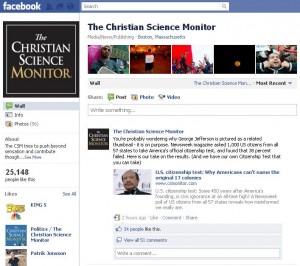This week’s social media news has a special St. Patrick’s Day twist because it comes to us from across the pond written by Eoin Kennedy of Dublin, Ireland. Eoin is the Associate Director at Slattery Communications, where he heads up their digital offering Engage Online. Eoin has 15 years of experience in corporation communication with multiple degrees in public relations and marketing. He was an associate lecturer in Marketing with NCIR, a lecturer on Irish Times Digital Diploma in Digital Marketing, and the list goes on. To learn more about Eion’s experience read his LinkedIn Profile. Eion is also active on Twitter and writes his own blog, Thoughts on Communications in Ireland. He has a deep interest in social media and how it impacts public relations which is why we’re so excited to ask Eion a few questions.
1. What is the most brilliant use of Twitter and/or Facebook that you have seen employed by a SMB recently?
Finding truly brilliant examples is difficult within Twitter and Facebook but there are lots of examples of Irish companies using the platforms in very effective ways and leveraging real business opportunities. It is also a highly subjective exercise so instead of trusting my own judgement I crowdsourced some opinions of fellow Irish Twitter users. The results were interesting and although they included some self promotional responses they uncovered some interesting examples. The short list included:
GoHop
Coffee Shop 3FE
Lake Hotel Killarney on Facebook
Car Spare Parts Mick’s Garage
Jameson Whiskey
Various Diageo Brand Guinness
Smirnoff
Captain Morgan
Renvyle House Hotel
Italian Restaurant – La Cucina
Burrito Restaurant – Burrito Blues
Business Support organization – Business Start-Up
Ethical Online Shop – Coze De Roze
Entrepreneurship Support – Social Entrepreneurs Ireland
Media Buyer – Media Works
Childrens Waterproof Online Clothing Store who have won numerous awards – Puddleducks Twitter and Puddleducks Facebook.
The hospitality industry generally scores well in use of twitter and social media but the one that was references most was Irish Weather Online with their use of Twitter.
The service earned its stripes during particularly bad weather in December in Ireland with timely and accurate weather reports. It was not the only weather service during that period and they was plenty of collaboration of fellow twitter users sharing stories and warnings but the consistency won them great praise. To me this reflects the characteristic of good Twitter and social media use in that they are highly focused, very time sensitive, engage/converse a lot and reach great heights in a short period. Within social media great heights can be reaches but maintaining attitude can be very difficult.
The list above is not exhaustive but Plenty more great examples at Brendan Hughes Blog and Your Social Monitor Ireland.
One voluntary project we are involved with at the moment is an attempt to harness Irishness and affinity to Ireland through a Shamrock Urself . Driven by social media enthusiasts its objective is to give a sense of unity in troubled economic times. Many of the best social media projects take this form of using collective goodwill rather than straight forward commercial exploitation of the platforms.
2. How will the rise in adoption of smart phones impact PR in the near future?
Smart phone adoption in Ireland is reasonably solid but not near global penetration levels. One piece of research by Return2sender show that one-fifth of Irish adult population owns smartphones with the expected smartphone ownership to grow to 1.5 million by spring 2011.
- 256,000 people own an iPhone in Nov 2010 – expected to reach 630,000 by end of 2011
- Some 8.4 million apps have been downloaded by almost a quarter of Irish consumers, with half a million people downloading them on a regular basis.
- One-third of these apps were paid and two-thirds of them were free. Music and games were seen as the most popular apps.
- Men were the most dominant in the Irish market – 64pc of smartphone owners were male and 59pc of people who download apps were also male.
- Broader Smartphone adoption breaks 50% in November 2010
There a number of ways that the smart phone will impact PR including:
– Content filtering based on user preferences online means that news is delivered to user tastes – our choice of media will change and we cannot guarantee outreach to audiences
– Need to ensure platforms, sites, apps are optimized for mobile use
– Need to generate timely and consistent information and news on the move rather than traditional media peak times.
– Need to have capability to build and create mobile video content
– Skimming of storing by users and rapid sharing
– Social TV (see below)
– Need to build location based offerings and promotions
– Additional social media activity
– Increased posting and photo uploading sharing by consumers – positive and negative. Organisations with physical premises could benefit greatly by user generated content but it bring adherent risks.
– Increased need for continual monitoring as comments, posting from smart phone can arise at any time.
– New tech that will change mobile behaviours – RFID and NFC. This could impact from registering to events and ability to seamlessly purchase using smart phones.
In general peoples relationship with their smart phones is extremely personal. This allowed better one to one relationship but access is guarded more carefully by users so there is a need to exercise caution in this approach.
3. From a PR and small business PR and marketing perspective – what is the next “big thing” on the horizon in IE/UK/EU?
PR as a discipline had always sought opportunities in new communication modes and in theory as owners of messaging should always be deeply engaged in all communications.
PR practitioners will continue to look at ways of harnessing social media and there will be increased use of SEO PR especially as the number of traditional media outlets drop. Search will continue to be important and an increased importance will be put on areas like article links with large traditional media website than the traditional press cutting.
There are many developments on the horizon or currently par boiled but developments will be rapid due to the speed of innovation but also the degree of competition between SEO companies, ad agencies, hybrid consultancies and web development companies, all looking to own this space.
Some of the immediate ones are
- Increased use of multimedia content and its generation
- Building of large social media databases and communities that can be utilized to evangalise on brand behalf
- PR companies grabbing increased SEO and online advertising budget
- Online response timing will continue to be cut shorter
- PR companies themselves investing in life streaming and greater transparency
- Blogger relations and online planning will become a normal part of PR life
- Increase focus on creative online solutions and pure social media/digital campaigns
- Organisations will invest further in online reputation management and online crisis management
- This will be the year of Facebook places and geo locations services
One of the big development I think the industry is relatively unprepared for is the rapid emergence of 24/7 PR. The evolution of social TV, whereby people discuss, comment and share what is happening on TV is a growing phenomenon. On a personal side it is a superb addition to TV viewing and equivalent to sharing the couch with a huge variety of people. It makes life as a channel hopper even more distracting and results in even better dialogue as people are discussing live issues rather than from memory at the water cooler the next day.
As usual technology evolutions will be key to moving this from niche to mainstream. Using a PC for social TV is clunky, lap top less so, iPhone or smart phone even less and iPad a much more enjoyable experience. Even with all these devices the level of social TV is pretty small and confined to short comments , conversations and observations on talkshows and current affairs programmes but it also extends to soaps. However the advent of internet enabled TV along with enhanced cloud services and the inclusion of movement sensor technology such as Microsoft Kinect will change all of this. These technologies changes will change a trickle to a flow and a flow that the PR industry looks unprepared for.
Consider the difference between a few avid twitters commenting on a news piece versus the unstoppable gush of the total TV viewership in pure numbers terms.
In the not too distant future instead of a multitude of devices we will have one extremely large screen with a ultra fast internet connection. All photos, games, documents will be accessed in the cloud rather than the current collection of PC, DVDs, Games Consoles etc. People will become familiar and comfortable with using the TV for things other than watching programmes. Similar with current gaming with the Xbox Kinect manipulation will be through the person themselves. A simple wave will bring up a menu, a hand pointing in mid air will reveal a key board. The senor will interpret these movements so the person needs not move from the seat.
Now consider a company you represent is in the middle of a crisis that is airing on a current affairs programme. Imagine ,if at the wave of a hand, that the thousands of viewers were able to pull up all their social media properties, blogs and websites. Imagine the level of live tweeting, retweeting, @comments, Facebook tagging, Linked In searching and flash mob organizing that could be done from ones couch.
Imagine the levels of comments on a company’s Facebook page, the searches on executives and the posting of video comments (which the Kinect would easily allow), the parodies of performances, the volume of emails to company contact, texts and calls to spokespersons mobiles and rapid Infographics generation.
This potential flood cannot be dismissed or ignored until the next day so the ability of PR companies to monitor, interpret, engage and respond in a 24/7 basis could be something very real in the short term. There are lots of implications of this from rapid messaging development, large scale online planning , monitoring and online activation.
What is certain is that technology advancements will happen and bring smaller scale online activity to almost mass medium level. The PR industry needs to be ready for these changes and able to help guide organisations through the maze – otherwise there are plenty of organisations on the sideline waiting to eat its lunch.
Hope you enjoyed this special post, if you have suggestions for future Social Media News posts, want to ask questions or share thoughts, please feel free to email me. Thanks! – Laura
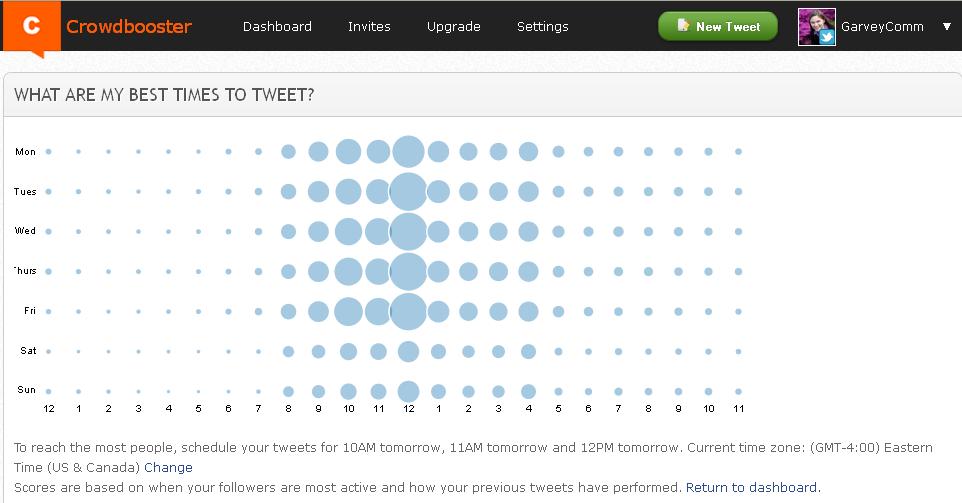 4. Include your Twitter handle on business cards, your email signature, your blog, website, etc. Link to it anywhere you can.
4. Include your Twitter handle on business cards, your email signature, your blog, website, etc. Link to it anywhere you can. 